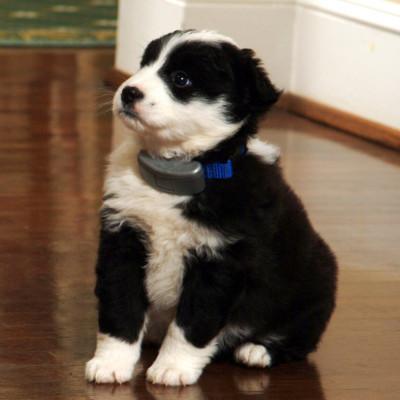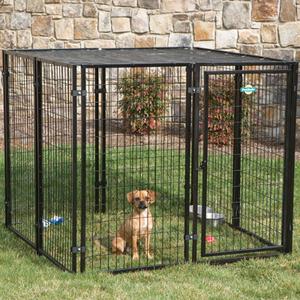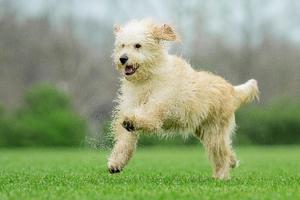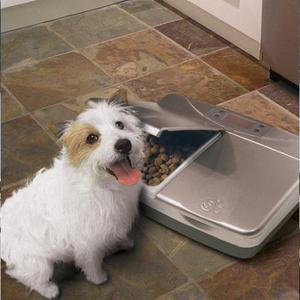You want a well-trained dog, and potty training is where most people begin. We're going to focus here on puppies, but what we talk about is pretty much the same for older dogs.
Potty training a puppy is more people training than puppy training because your puppy knows how to pee and poop - he just doesn't know where you want him to do it. He's not going to train himself, and that's where you come in.
First Steps
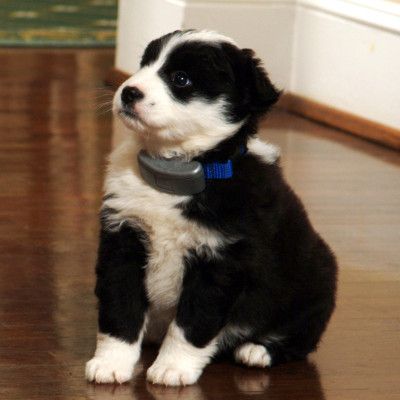 The first several days are information gathering. You need to find out what his internal pattern or schedule is. When you know that, you can begin to change his schedule to one that is more in sync with yours.
The first several days are information gathering. You need to find out what his internal pattern or schedule is. When you know that, you can begin to change his schedule to one that is more in sync with yours.
Before you start, have realistic expectations. Expect there will be accidents. Everything in his house is new, and he needs time to adjust.
In order to be reliably potty trained, your puppy needs mental control and muscle control. Mental control to know where to go and muscle control to hold it until he gets there. A 6-month-old puppy will have an easier time than a 6-week-old puppy because the older puppy has progressed further developmentally.
The Basics
- Take your puppy where you want him to go when he has to go.
- Reward him when he goes in the right place.
- Watch him like a hawk or confine him at all other times.
- Clean any accidents with an enzyme-based cleaner.
Let's take them one at a time in more detail.
Take Your Puppy
You need to be present so he goes in the right place. Just letting him outside or crossing your fingers and hoping he'll go on the potty pad or the Pet Loo just won't cut it. Take him on a leash, even if you have to carry him. Hang on because we'll talk more about this in a minute.
Where You Want Him to Go
Decide where you want him to go. If it's in your yard, is it anywhere in your yard or is it in the southeast corner? Is it on grass, on dirt, on cement, or in your flowers?
It helps if you know the surface he is used to using at the breeder's, shelter, or former owner's place. If it's pads, use pads. If it's grass, use grass. You want to get him on a schedule and familiarize him with your house. You can change the surface and the schedule later.
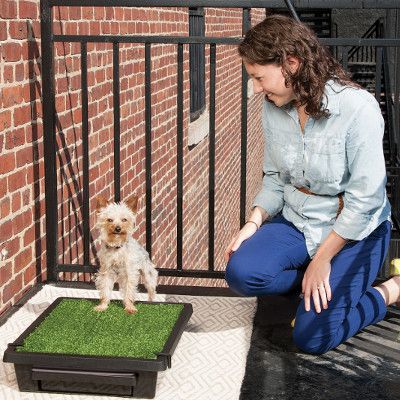 When He Has to Go
When He Has to Go
Keep a diary so you know when he has to go. There are certain predictable potty times -
- Whenever he wakes up. Puppies may sleep 20 times during the day, so that means 20 opportunities to teach him the right way.
- X amount of minutes after he has something to eat or drink. X gets larger as he gets older because he has more muscle control as he matures.
- Right after he chews something because chewing is the first process in digestion, and those digestive juices are flowing!
- Whenever he gives you any signals that he has to go
- Walking towards his potty area
- Sniffing the ground
- Acting weird - barking at you, pawing at your leg, or something else out of the ordinary
- Standing still. You'll have to be very quick to see this because it's almost instantaneous.
Reward Him When He Goes in the Right Place
Whenever your puppy does any behavior, he needs to know whether you approve or disapprove within 1 second to associate his behavior with a reward. So, that's why you need to be with him when he potties.
Set up the Train 'n Praise Potty Training System in your potty area. Grab a treat or the remote for the Train 'n Praise on your way to his toilet area so you can reward him immediately after he finishes. If you wait to reward him until he gets in the house, then you've rewarded him for coming back into the house, which is not exactly what you wanted.
Watch Him Like a Hawk or Confine Him at All Other Times.
That means eyeballs on your puppy, not on the computer or the TV. If he hasn't pottied and you know he has to go, then put him in his crate. Your puppy doesn't like to potty where he sleeps, so he will start whining or barking when he has to go.
Clean Any Accidents with an Enzyme-Based Cleaner.
Don't rely on products such as rug deodorizers that can be purchase at grocery stores or some concoction that your mother-in-law makes that worked perfectly for her puppy. Those may get rid of the smell for you but not for your puppy, since his nose has more smell receptors than yours. Get an enzyme-based cleaner that are specifically made to remove the source of the smell.
One Other Thing
Don't interrupt your puppy if he is having an "accident." Huh? Everyone else says to clap your hands or stamp your feet to stop him or tell him "no" and then take him to his potty spot so he can finish.
But when he potties, he needs to relax those muscles. If you interrupt him, the muscles tighten, and he stops going. Now you take him to his spot and wait for what seems like hours, but he still won't go. So you figure that he doesn't have to go anymore and go about your business. But as soon as you go inside or turn your back, bingo, there's a puddle on the floor.
If he has an accident, let him finish and make it a point to be more vigilant. When ya gotta go, ya gotta go! He just couldn't hold it until he got to his toilet area.
These are the basics for potty training your puppy or dog. It generally takes about 3 weeks for your puppy to understand what you want him to do. Happy training!

